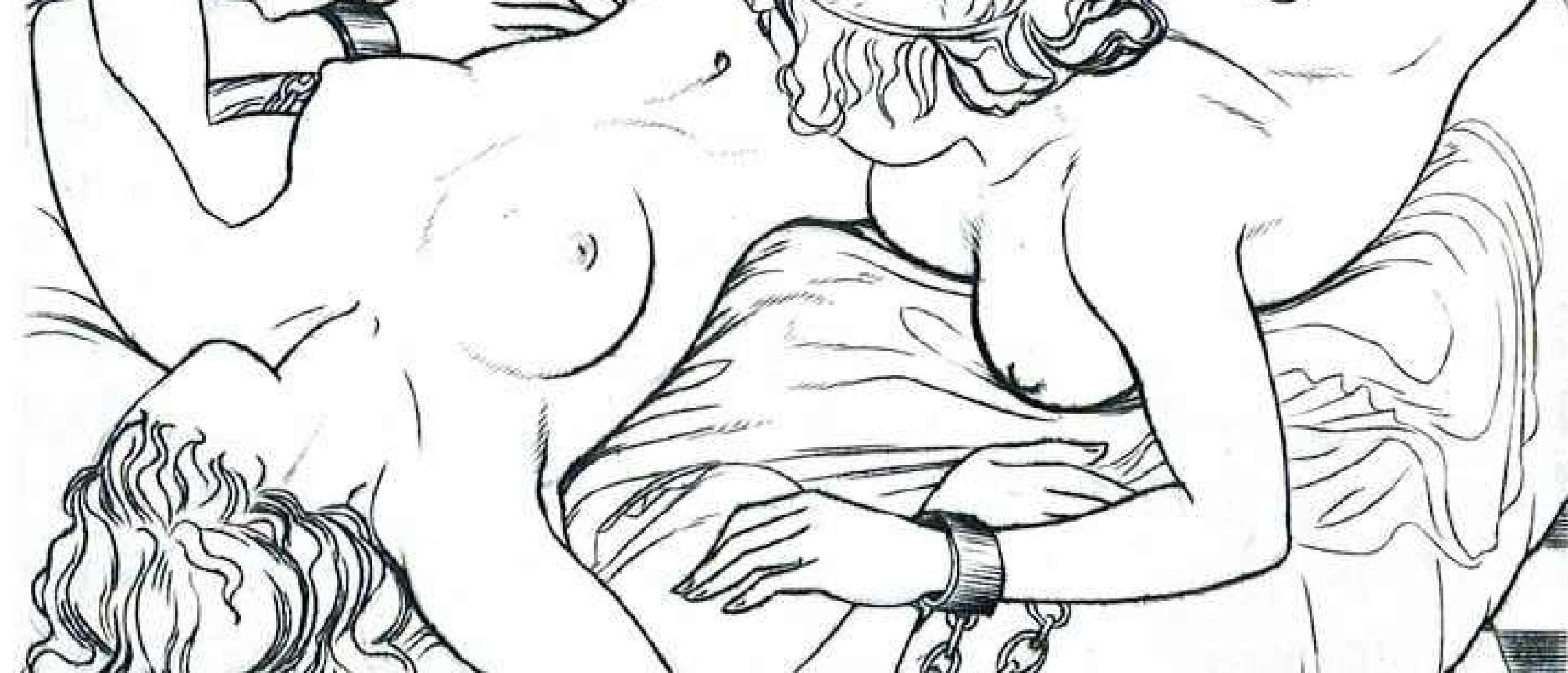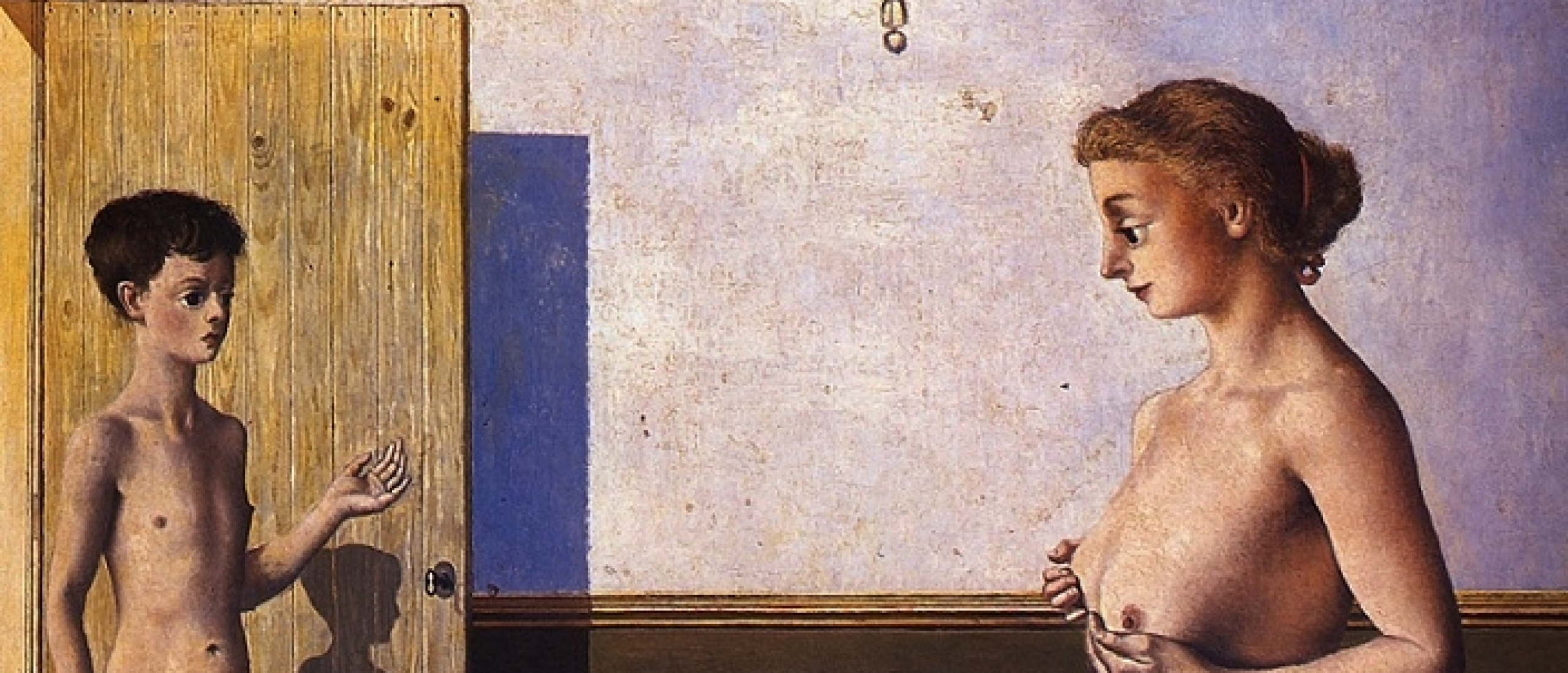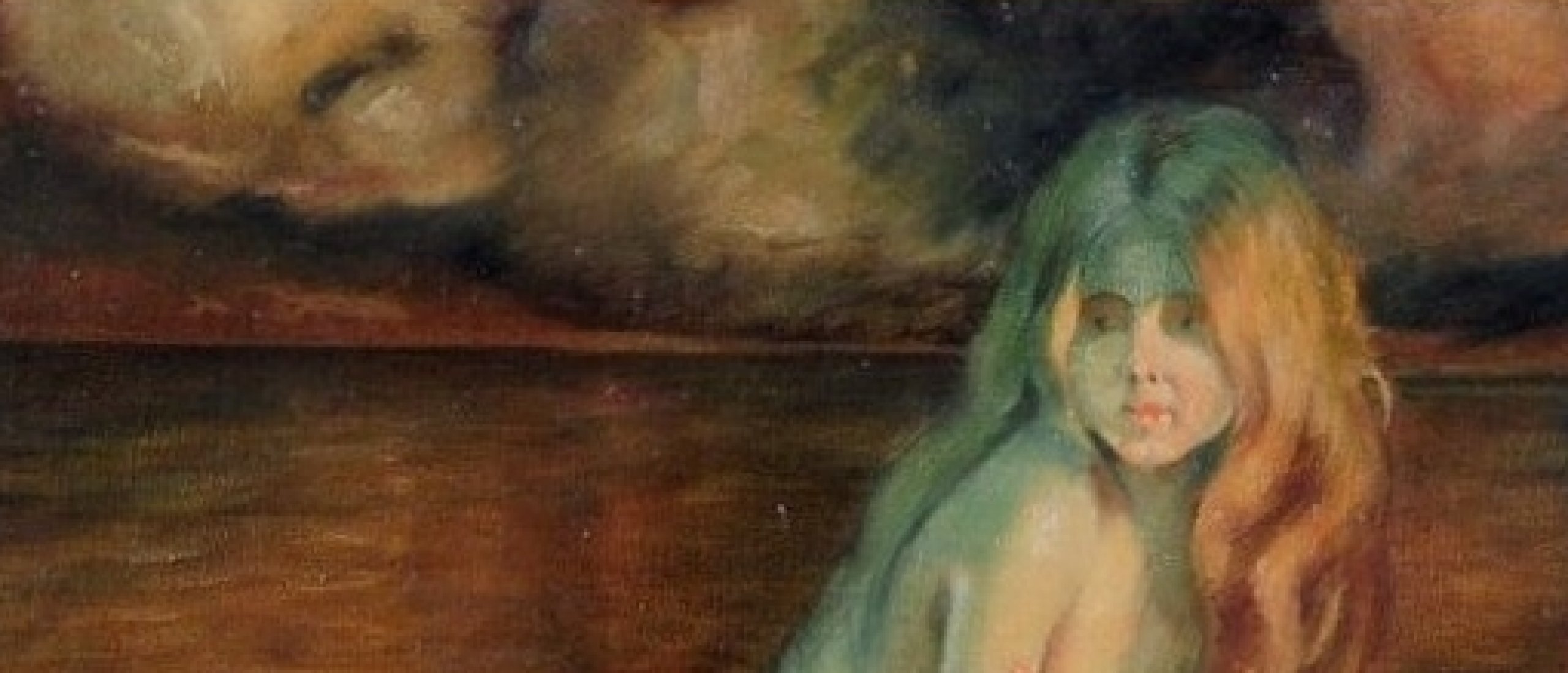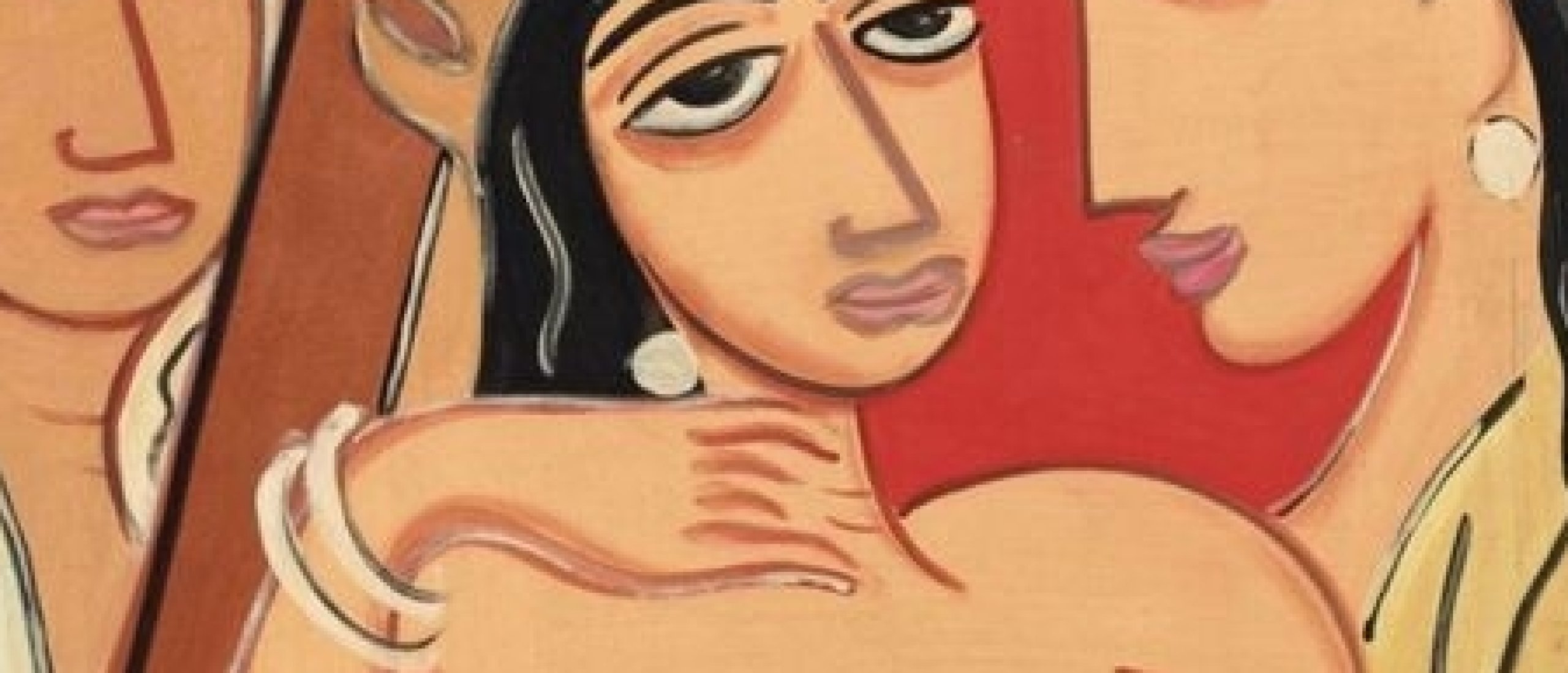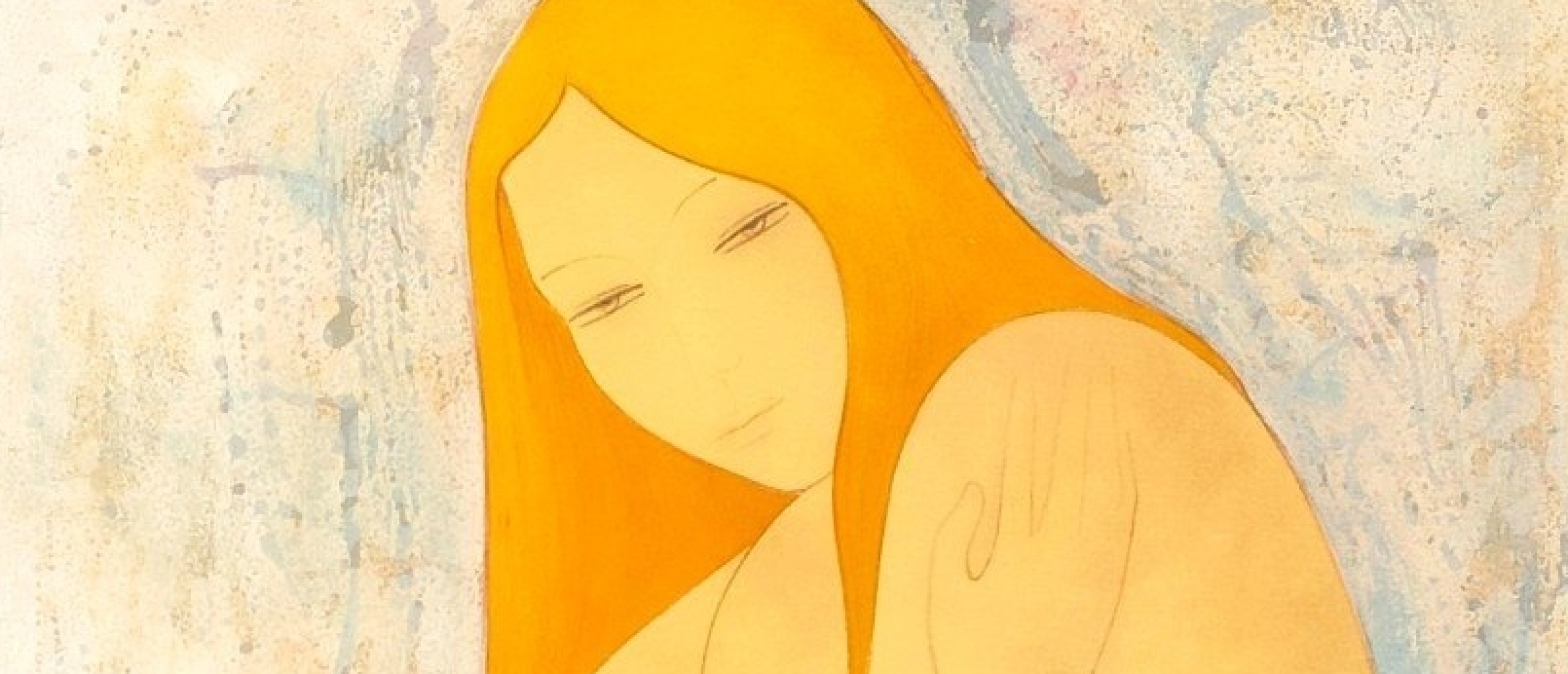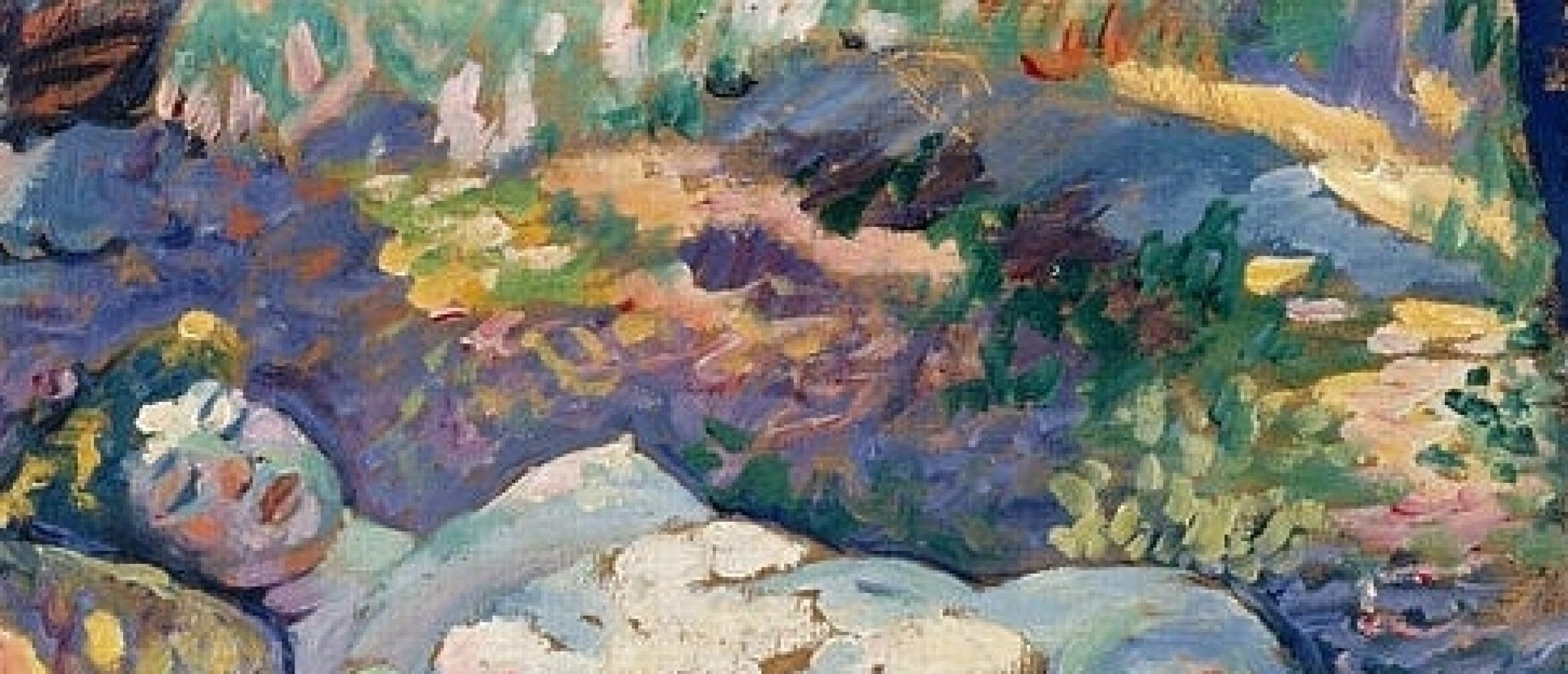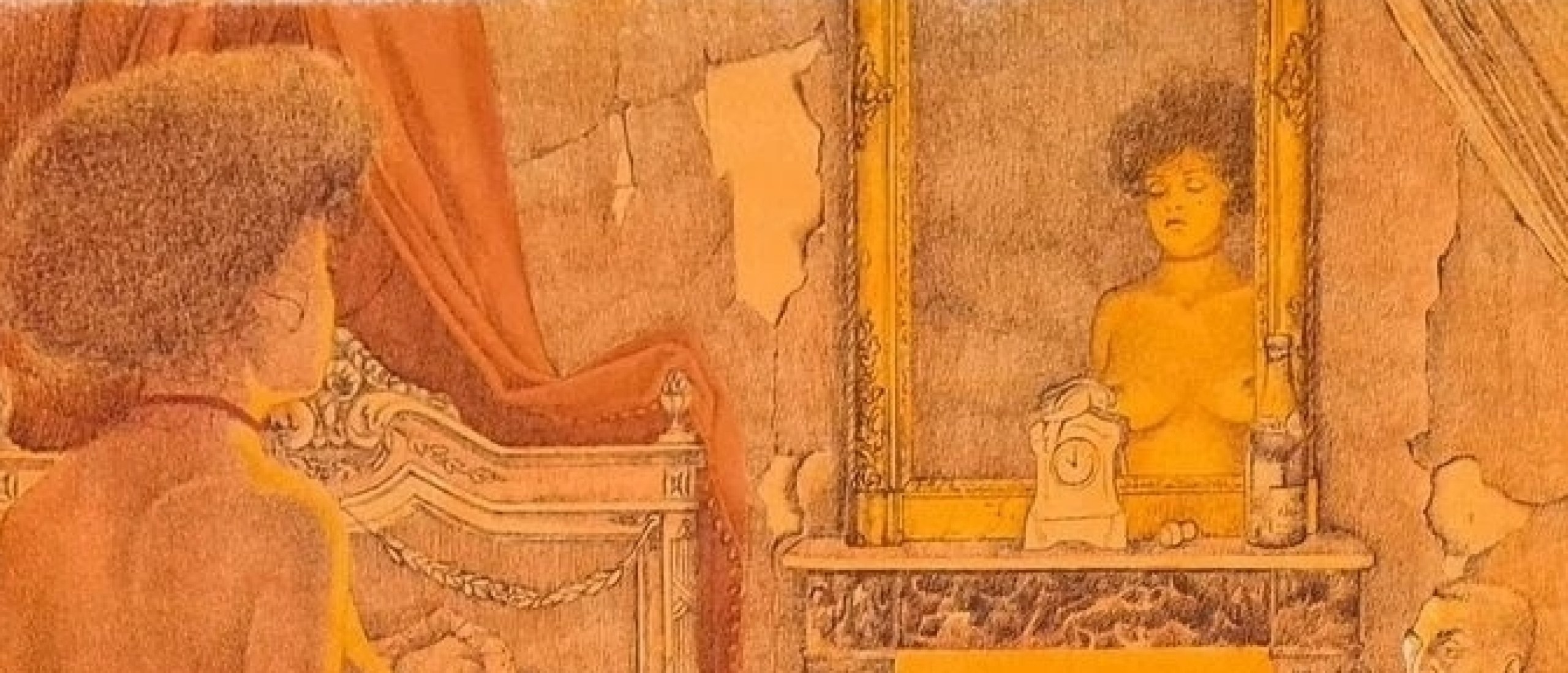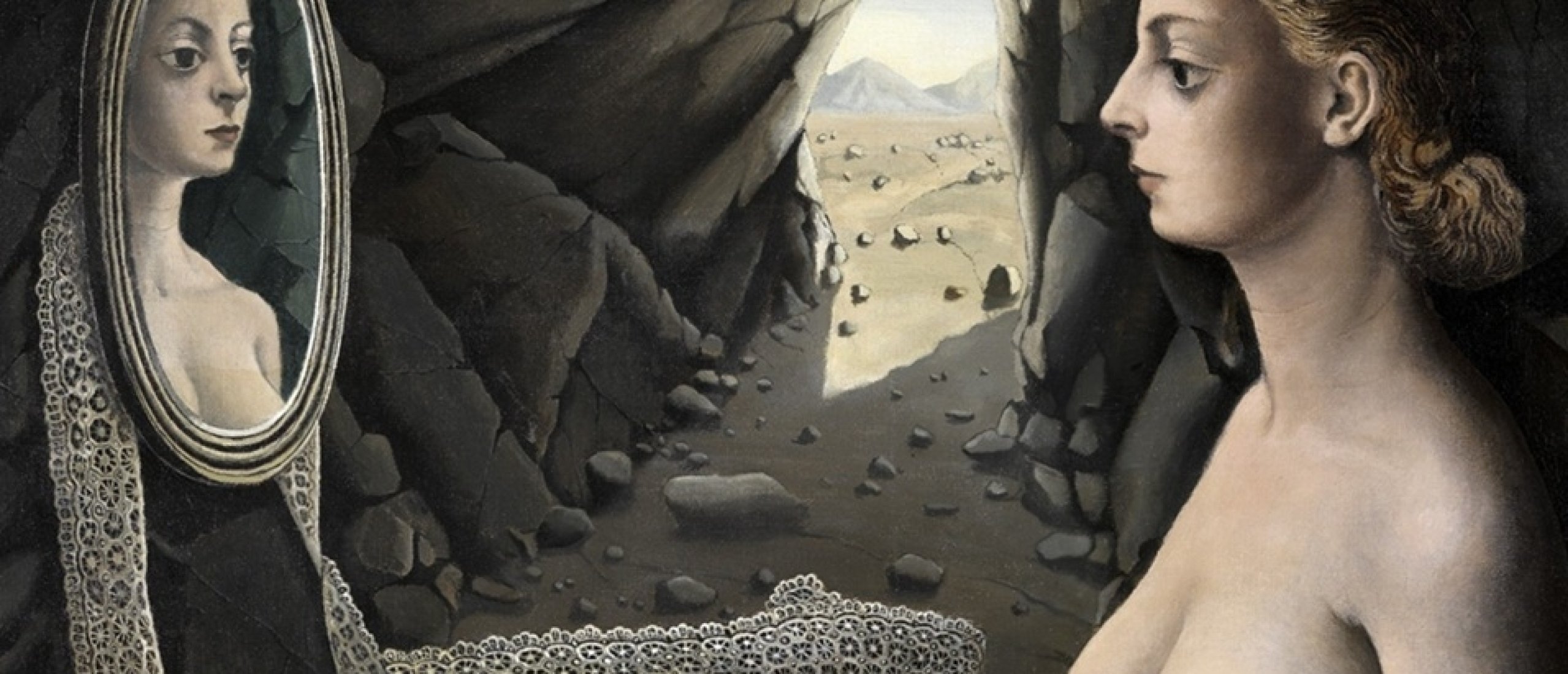
Belgian painter Paul Delvaux is remembered for his dreamlike paintings that are a unique blend of eroticism, classical architecture and an eerie atmosphere. Delvaux, like many of his contemporaries, was influenced by the Surrealist movement, a group that sought to unlock the unconscious mind, explore irrationality, and challenge conventional perceptions of reality. The Surrealist movement, founded by André Breton in 1924, emphasized the role of dreams, symbols, and the subconscious in art. This focus on the subconscious gave surrealist artists the freedom to explore themes that were often taboo, including sexuality, desire, and the erotic.
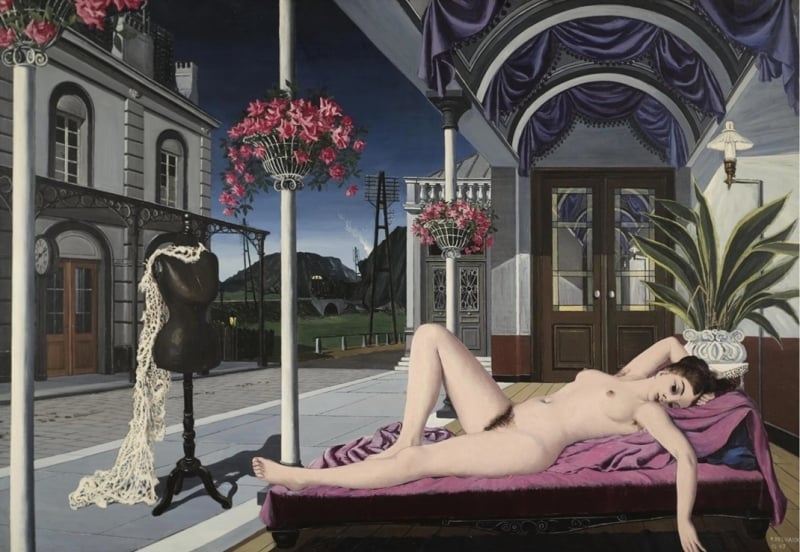
Fig.1 The Nude and the Mannequin, 1947
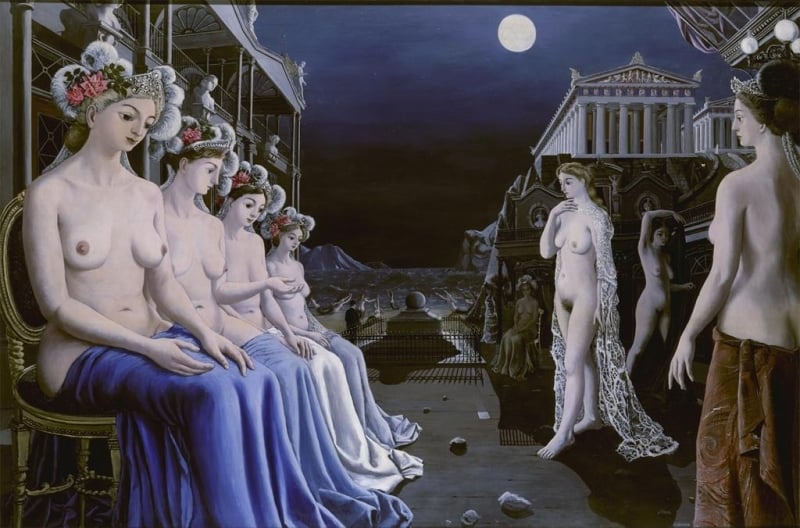
Fig.2 The Great Sirens, 1947
Cold Blondes
After looking at Delvaux’s paintings one after another one can easily notice a few motifs that keep reappearing in almost every painting. This juxtaposition of visual elements almost makes them seem like a collage. First and foremost there is a figure of a nude woman, one woman or many women. No matter the number they all look the same. Delvaux’s vision of the female form is a voluptuous, curvy, pale woman with big bosom and a doll-like face. They have as much face expressions as an inflatable doll does. Frigid, cold blondes. Though their bodies are irresistible, but their faces seem untouchable. Delvaux’s women are portrayed both as the objects of desire and as agents of their own mystery and in this way Delvaux captures both the erotic tension and a sense of mystery.
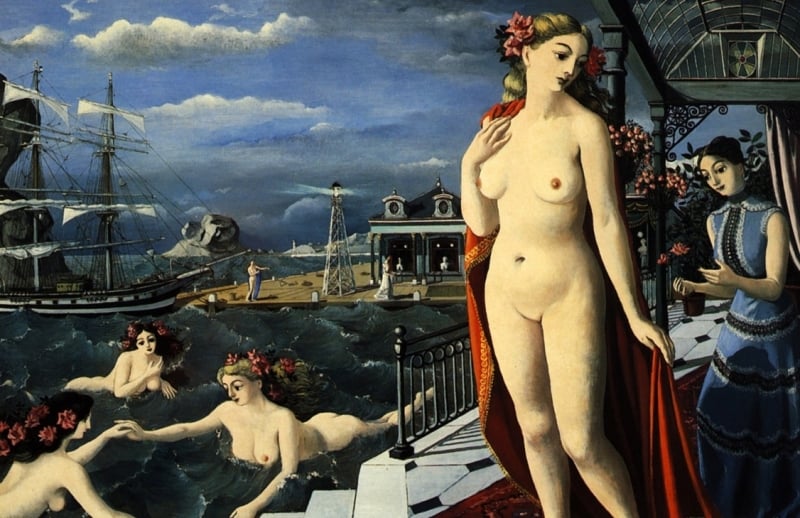
Fig.3 Birth of Venus, 1947
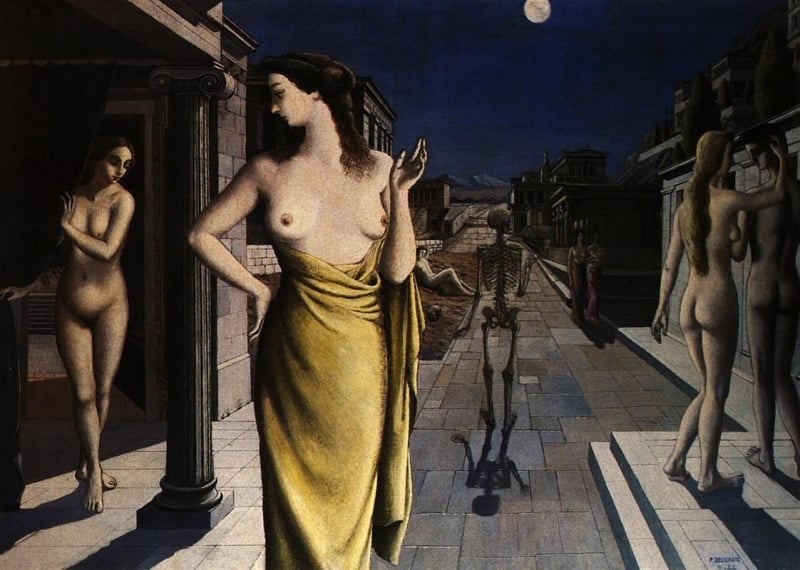
Fig.4 The Lunar City, 1944
Nocturnal Versions
The second motif commonly seen in Delvaux’s paintings is the classical architecture; mostly an image of a Roman temple or the cold white marble columns. Thousands year old ancient architecture serves as a metaphor for the passing of time. The third recognisable motif is the setting – it is always night in Delvaux’s mysterious world. And the full moon always shines brightly on his cold beauties. His paintings seem to me as erotic, nocturnal versions of the paintings of Giorgio de Chirico. Blue is the colour of Delvaux’s erotic surrealist dreams on canvas.
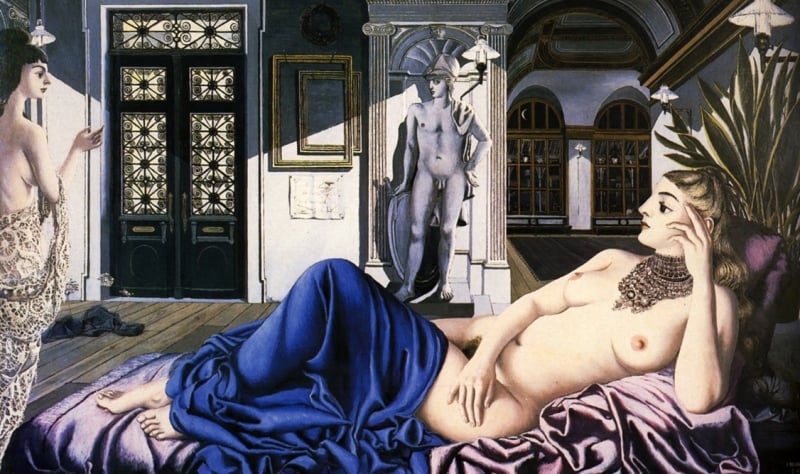
Fig.5 In Praise of Melancholy, 1948
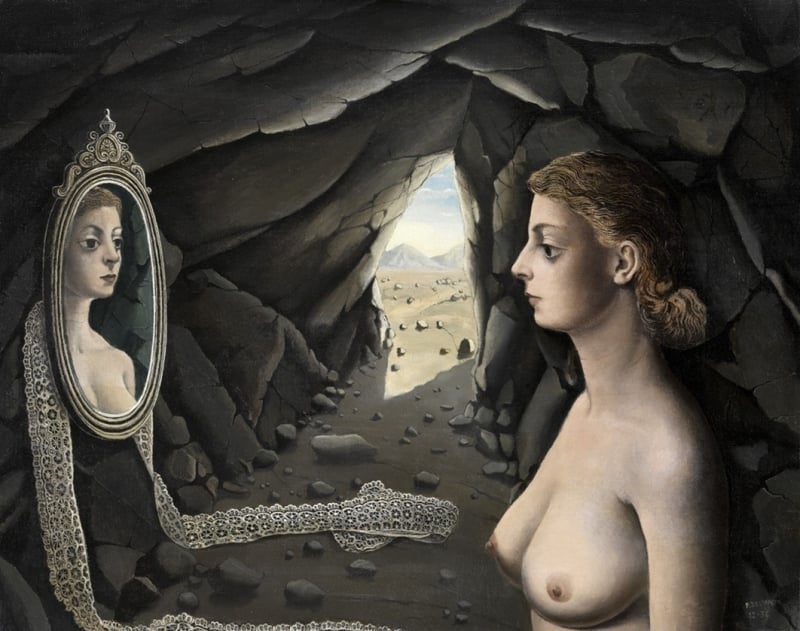
Fig.6 Woman in the Mirror, 1936
Unsettling Element
Visually his paintings are grounded in classical imagery but on a symbolic level they are imbued with irrational qualities which define surrealism. There is an unsettling element in Delvaux’s paintings. One cannot pin-point what element is it exactly that makes one uncomfortable, but the strangeness is definitely there. There is a tension and a contrast between the real and the imagined, the rational and irrational in Delvaux’s art.
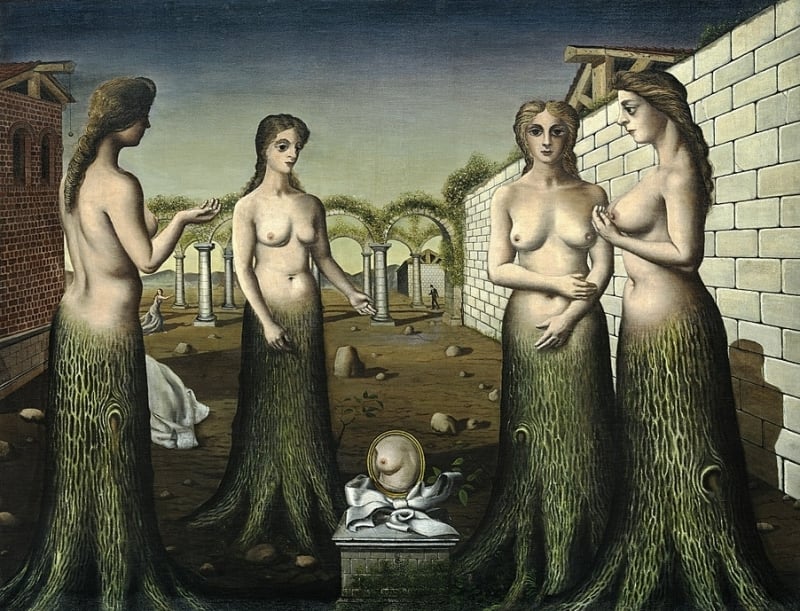
Fig.7 The Break of Day, July 1937
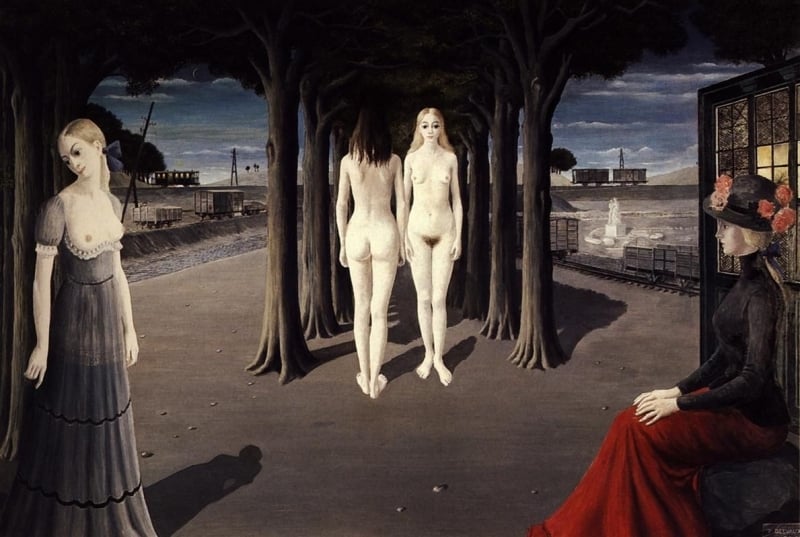
Fig.8 Ruins of Selinunte, 1973
In the extended Premium edition of this article we're going to closely examine some of Delvaux's most notable sensual works.
Click HERE for an article on Paul Delvaux's most sensual sirens
What do you think about Paul Delvaux's sensual surrealism? Leave your reaction in the comment box below...!!

